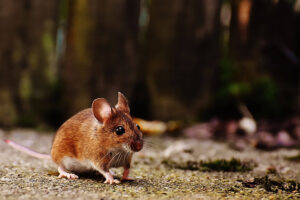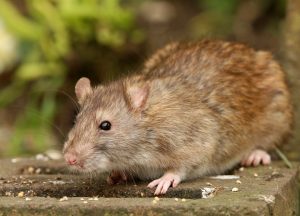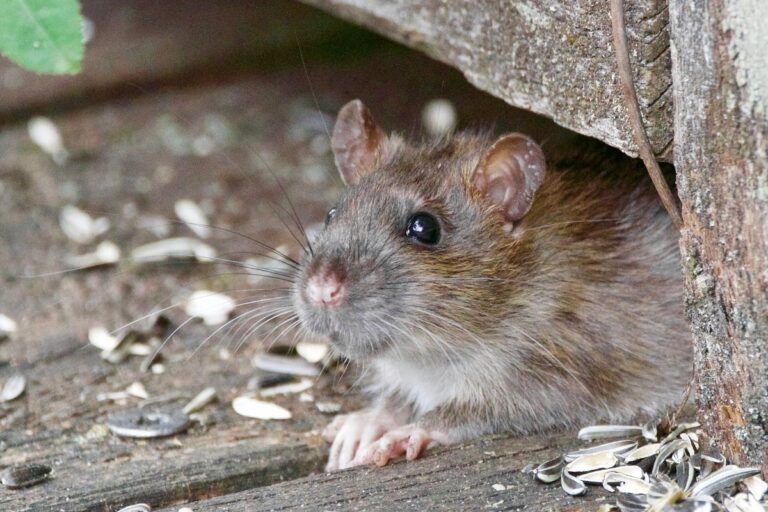If you’re hearing strange scratching or scurrying noises in your walls, or perhaps have noticed some small droppings in the kitchen, laundry room, or basement, chances are your house is being enjoyed by rodents.
But in order to determine how to resolve the issue, first you must know what you’re dealing with—mice or rats.
Many people seem to think mice and rats only differ from one another in terms of size, but there are many more subtle differentiators, including behavioral ones.
Rat vs Mice Appearance
The easiest way to tell mice and rats apart is their appearance. At first glance, mice might appear to be scaled-down versions of rats. Rats and mice are different sizes, colors, and body shapes. If you have an infestation, it is rare to see a rat or a mouse. You are more likely to see the evidence left behind from the rodents. The most obvious one is rodent feces.


Rats vs Mice Size
House mice are diminutive creatures, reaching an adult body length of a mere 3-4 inches, and a tail length of 1-2 inches. Their weight rarely exceeds 45 grams.
Rats can grow up to ten inches long, not including the tail. The tail usually is as long as the body. Adult males typically weigh around 1.25 pounds.
Rats vs Mice Color
House mice are light brown or grey, with solid coats, while deer mice have brown or tan fur with white bellies.
The most common rat, the Norway rat, has a brown body with a white underbelly, while roof rats appear dark grey-brown, with undersides that range from white to grey to black.
Rats vs Mice Anatomy
- Point, triangular-shaped head
- Larger ears proportionally
- Long, thin tails with some hair
- Heavy, blunt heads
- Smaller ears proportionally
- Long, thick, hairless tail
Rats vs Mice Droppings
- 1/8-1/4 inch long
- Oblong with tapered ends
- 3/8 inch long
- 1/8 inch in diameter
- Oblong with rounded tips
Mice vs Rats Behavior
The differences between mice and rats don’t stop at the physical—they also display notable behavioral differences.
Mice are curious creatures and will often investigate things (such as baited traps) with little to no hesitation.
Rats are much more cautious, preferring to avoid unfamiliar situations; for this reason, it is recommended to set rat traps out a few days before baiting them, to give the rats time to familiarize themselves with them.
Rats are more social creatures than mice by far—so social, in fact, that they are often used in behavioral studies because their sociability is seen as somewhat analogous to humans.
Rodent Breeding Cycles
Mice Lifecycle
The average lifespan of a wild mouse is typically one to two years, while pet mice can expect to live a year longer. Getting into the realm of pure anomaly, a couple of pampered laboratory mice have reached the age of four and a half.
Male house mice court females by emitting special ultrasonic calls in the 30-110 kHz range. These calls are made mostly during courtship when the male mouse sniffs and follows the female around; however, they can continue when mating has begun. Males have been shown to emit these calls when exposed to female pheromones. The calls also appear to be quite complex; they seem to differ between individuals and have therefore garnered comparisons to bird songs. House mice can produce up to 14 litters of 1-12 offspring per year.
Rat Lifecycle
Like mice, rats can expect to live around two years in the wild, but there have been some cases of pet rats reaching seven years of age.
Generally, male rats reach sexual maturity at 10-12 weeks of age, although females may have their first estrus as early as 8-9 weeks of age. Rats are polyestrous and breed throughout the year, usually at night. Females can produce up to five litters a year, and the gestation period for Norway rats is only 21 days. Litters can number up to 14.
This means that under ideal conditions, the population of females could increase by a factor of three and a half in eight weeks, corresponding to a population growing by a factor of 10 in just 15 weeks. Therefore, a rat population can grow from 2 to 15,000 in just one year!
Where Do Mice and Rats Hide in the House?

Mice
Mice generally prefer to stay on ground level, and commonly shack up in or around major appliances such as stoves, dishwashers, or even vehicles that have sat idle for a while. They also commonly infest wall voids, as these are dark, warm, and free from both predators and humans.
Rats
Norway rats seek out moist, dark places such as basements, crawlspaces, and garages, while roof rats, as their name suggests, prefer elevated areas like attics, voids in the roofline, or in ceilings.
Signs of a Rodent Infestation
Droppings
Since rats are larger, their droppings will be larger as well. Rat droppings are generally 3/8 inches long, with a diameter of 1/8 of an inch. Mice droppings are about half this size. Both are oblong pellets, but rat droppings have rounded tips, and mice’s have pointed tips. Rat droppings are most commonly found where rats are active: in basements, crawl spaces, and behind large appliances.
Runways.
Mice and rats are creatures of habit and will follow the same route between their nest site and food and water uses. After repeated use, these paths develop dark, greasy rub marks that are accumulated from the oils and dirt on the rodent’s fur. Runways usually follow along manmade edges like baseboards.
Gnaw marks.
A rodent’s teeth grow continuously, so they must gnaw on things to keep this growth in check. As you might expect, this leaves rather damning evidence. Look for gnaw marks on things like garbage cans, fences, food containers, and under porches.
Rodent Sounds.
Mice and rats all make similar sounds if they’ve made it into your house; these are usually described as rustling or scurrying noises. The bigger the rodent, the louder the sound will be.
Professional Rodent Control
While mice and rats might be different in many respects, they are both known for their tendency to transmit various diseases, multiply at an extraordinary rate, and be very challenging to deal with once an infestation has set in.
If you think you have a rodent problem, check out our rodent trap guide, or contact our team of experts at Trutech to devise a plan of action.


